10 April 2013
Primary structures in the Lake Vermilion Formation
Posted by Callan Bentley
This is the final outcrop that we visited on the fall 2011 “Structural Geology of the subprovince boundaries in the Archean Superior Province” field trip that I took just before the fall 2011 annual meeting of the Geological Society of America in Minneapolis. It was a great trip, full of great outcrops, but this one was one of the best. I’m going to split my discussion of the place into two posts – one for the primary structures (today, here), and another later in the week for the secondary (tectonically-induced; deformational) structures.
The Lake Vermillion Formation is well exposed at Pike River Dam in northern Minnesota. It’s a gorgeous succession of turbidite strata. Graded bedding is very common there, and exquisitely photogenic.
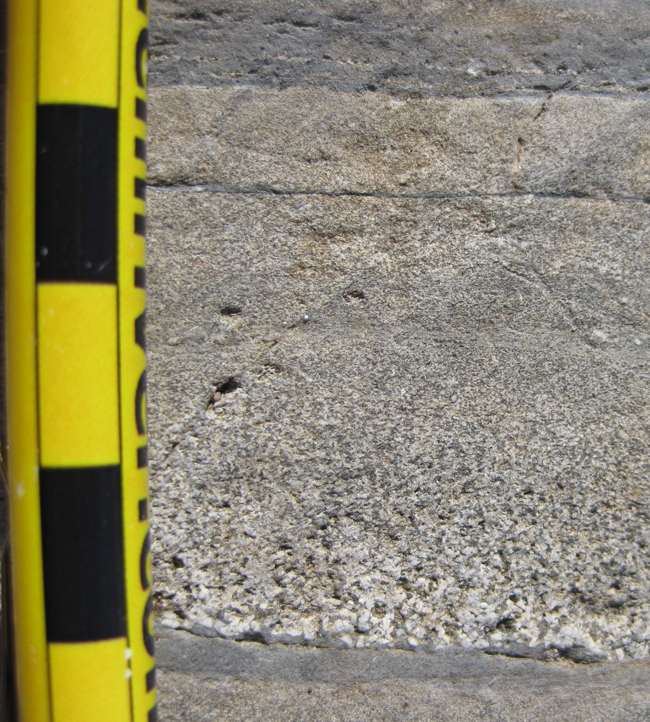

According to the field trip guide, 64% of the 201 graywacke beds in this outcrop exhibit grading, as do 9% of the inter-lying silt beds.
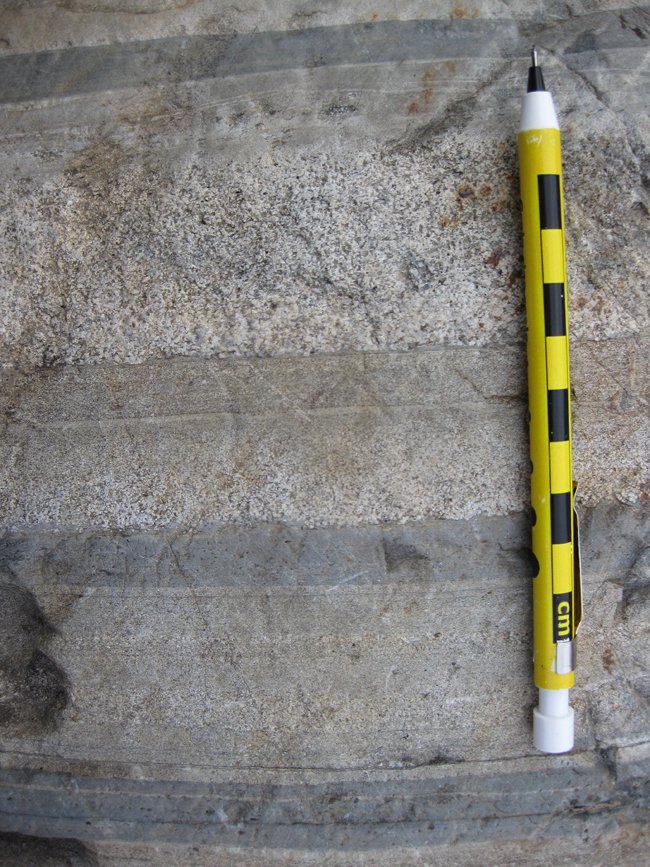
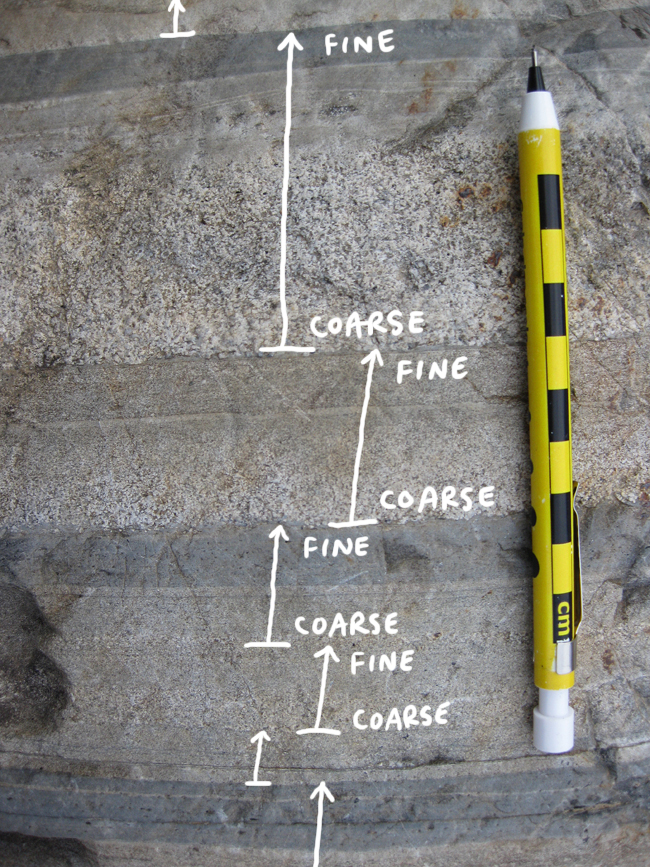
There are also lovely examples of soft-sediment load-induced deformation:
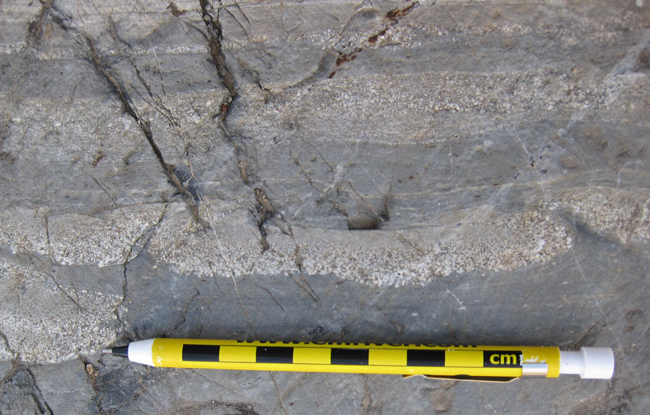
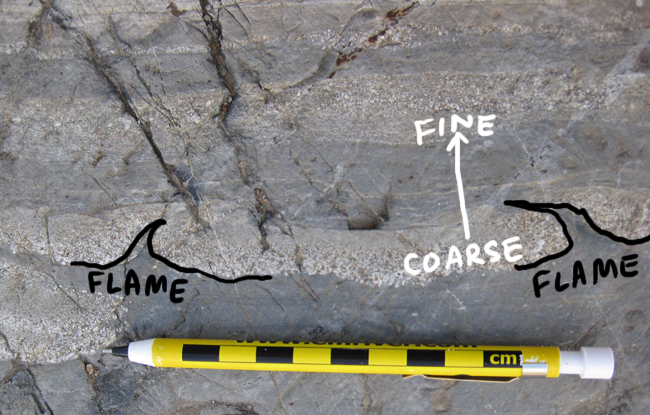
This means that a fresh load of turbidity-current-deposited sand was dumped atop some squishy mud, and the sand sagged downward in broad lobe-like forms, while the less viscous mud squished upward into pointy cusps called “flame structures.”
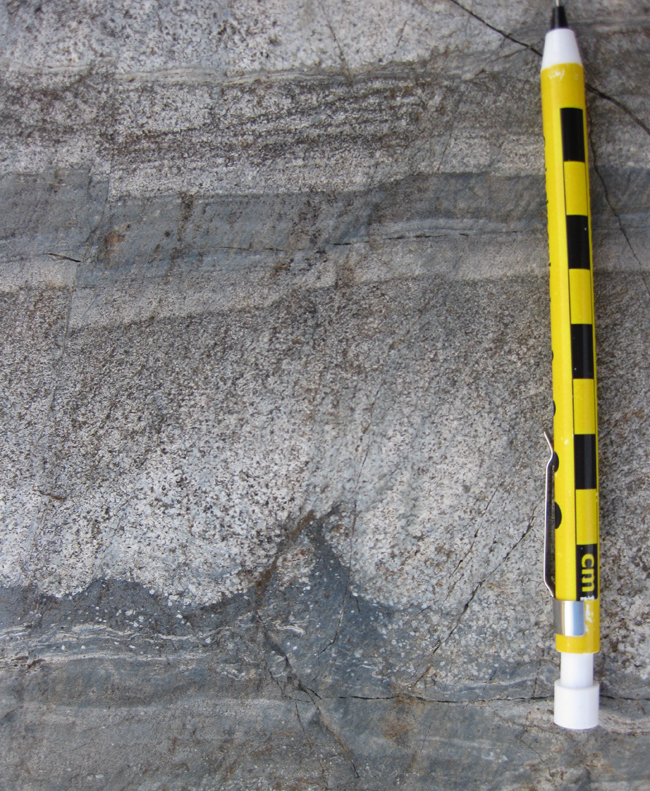

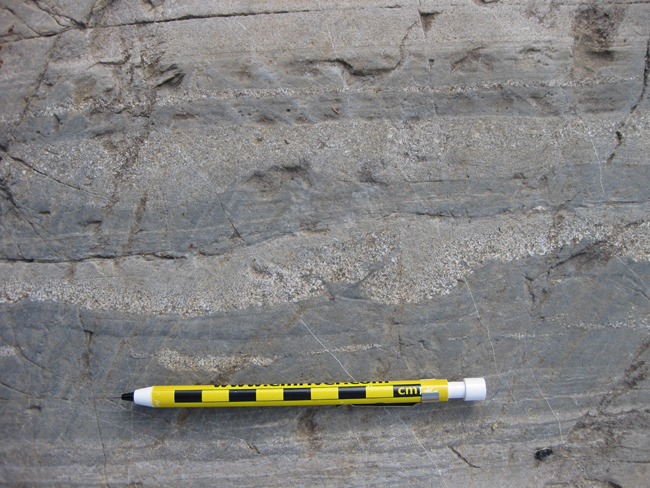
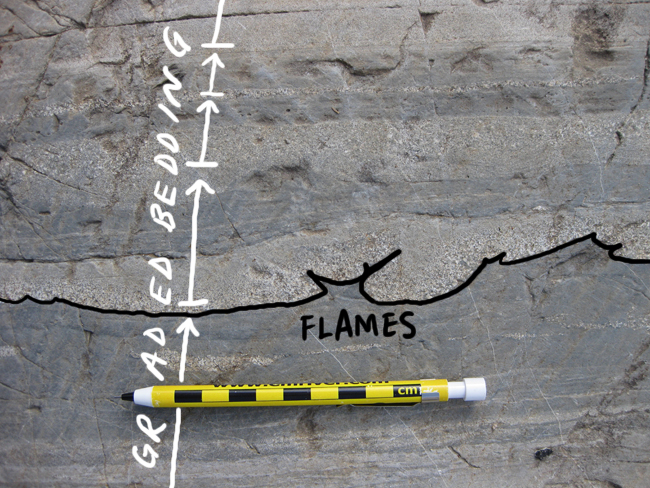


 Callan Bentley is Associate Professor of Geology at Piedmont Virginia Community College in Charlottesville, Virginia. He is a Fellow of the Geological Society of America. For his work on this blog, the National Association of Geoscience Teachers recognized him with the James Shea Award. He has also won the Outstanding Faculty Award from the State Council on Higher Education in Virginia, and the Biggs Award for Excellence in Geoscience Teaching from the Geoscience Education Division of the Geological Society of America. In previous years, Callan served as a contributing editor at EARTH magazine, President of the Geological Society of Washington and President the Geo2YC division of NAGT.
Callan Bentley is Associate Professor of Geology at Piedmont Virginia Community College in Charlottesville, Virginia. He is a Fellow of the Geological Society of America. For his work on this blog, the National Association of Geoscience Teachers recognized him with the James Shea Award. He has also won the Outstanding Faculty Award from the State Council on Higher Education in Virginia, and the Biggs Award for Excellence in Geoscience Teaching from the Geoscience Education Division of the Geological Society of America. In previous years, Callan served as a contributing editor at EARTH magazine, President of the Geological Society of Washington and President the Geo2YC division of NAGT.